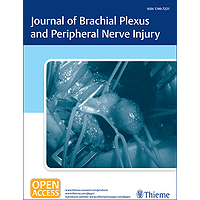This report describes a patient who had an open repair of a small supraspinatus tendon tear performed 6 months after an arthroscopic acromioplasty with debridement had failed to provide pain relief. Three months prior to the tendon repair, he had a two-level cervical spine discectomy and fusion (C4-5, C5-6) that improved his neck pain. Florid suprascapular neuropathy was detected 10 weeks after the open rotator cuff repair. Evidence of some nerve recovery resulted in a long period of observation. But unsatisfactory improvement warranted decompression of the suprascapular notch, which was found to be very stenotic. At surgery, there was no evidence of neuroma, cyst, or other compressing lesion or tissue. Therefore, it was ultimately hypothesized that there was an exacerbation of a preexisting, but clinically unrecognized, entrapment of the suprascapular nerve in the suprascapular notch in the setting of cervical radiculopathy (primarily C5). Retrospectively it was also concluded that had this compressive etiology been recognized, it would have favored prompt decompression rather than the long observation period. Three years was required to achieve a good result following suprascapular notch decompression. The underlying C5 radiculopathy may have created a "double crush syndrome" that contributed to the propensity for injury and the prolonged recovery. There should be heightened awareness of this problem in patients who do not have satisfactory improvement in shoulder pain from previous shoulder and neck surgery.

Florid Suprascapular Neuropathy after Primary Rotator Cuff Repair Attributed to Suprascapular Notch Constriction in the Setting of Double Crush Syndrome
Review badges
0 pre-pub reviews
0 post-pub reviews